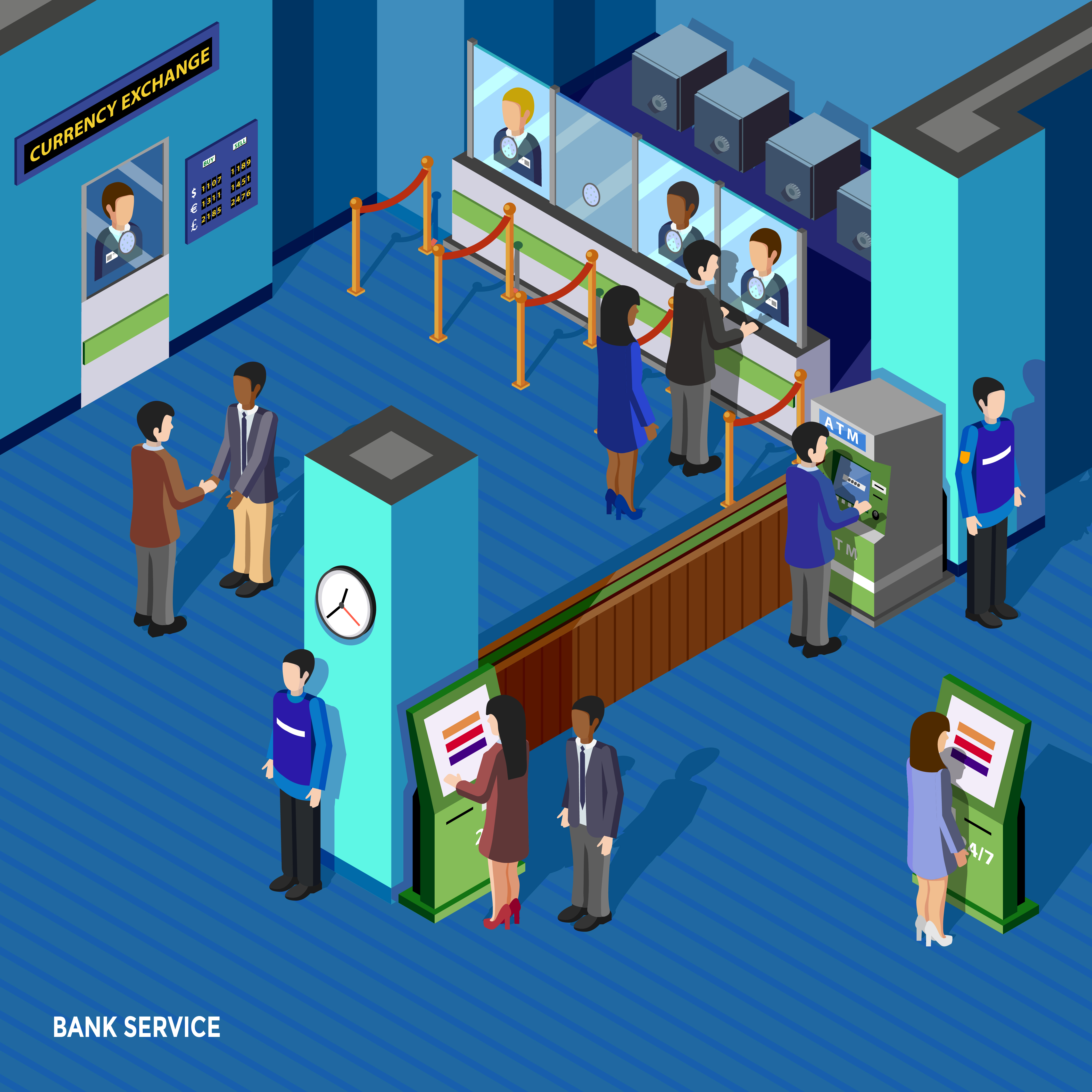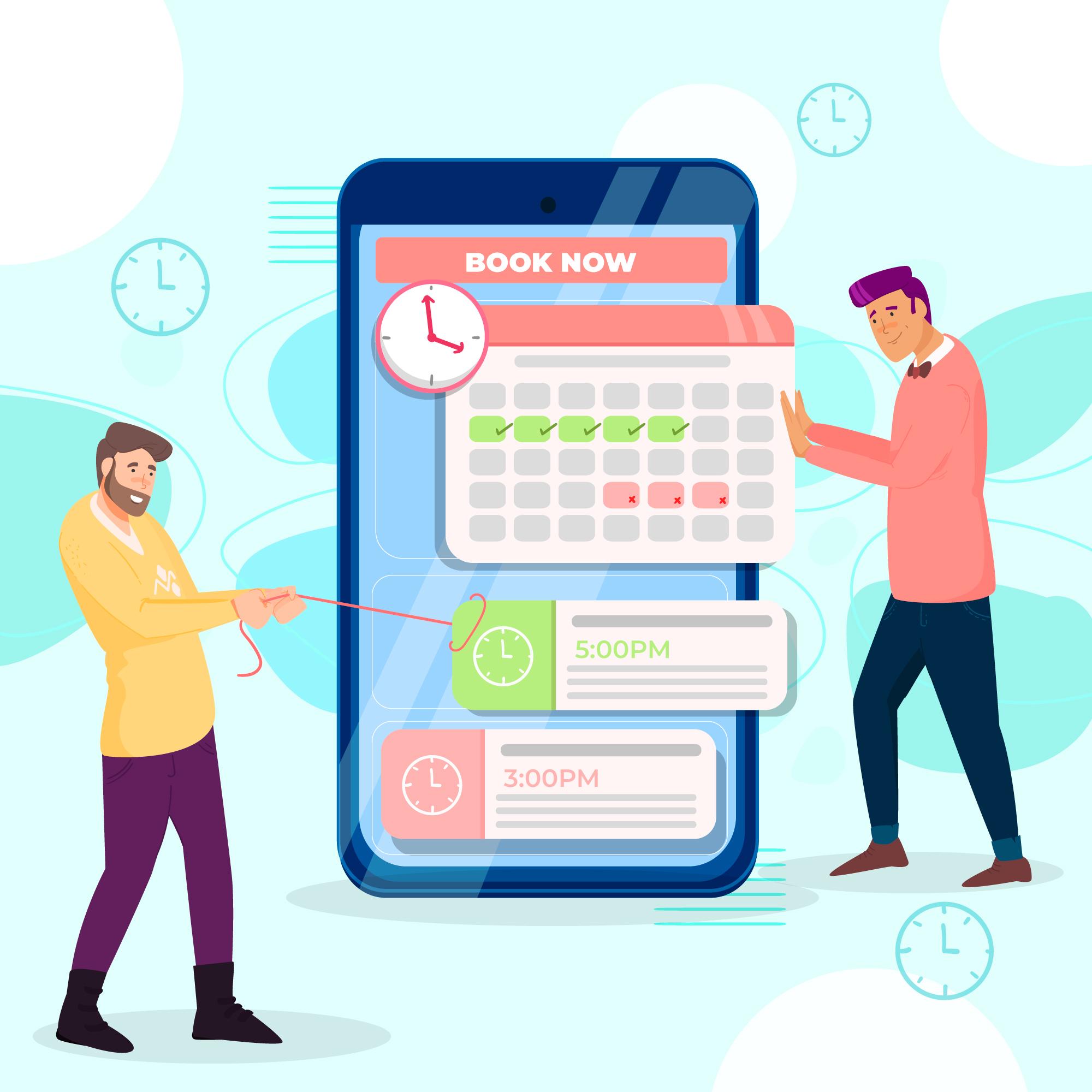Table of Content
Try Vizitor for Free!

Tue, Jan 7, 2025
Read in 11 minutes
Imagine walking into a government office to get a simple task done, but you’re greeted with a crowd of people, endless waiting, and no clear process in sight.
It’s not just inconvenient—it’s exhausting and frustrating for both citizens and staff.
Why are government offices still struggling with this problem in the digital age?
The reality is, outdated processes and disorganized queues are at the heart of the issue. Citizens grow impatient, staff feel overburdened, and public trust takes a hit.
But what if there was a way to eliminate these hassles? A way to reduce waiting times, bring order to chaos, and deliver a seamless experience for everyone involved?
A Queue Management System for Government Sector can eliminate these hassles to a great extent.
Unlike retail or private sectors, government offices deal with an enormous, diverse footfall daily—citizens from all walks of life seeking critical services. Unfortunately, traditional queue systems fail to meet these demands, resulting in long waits, confusion, and inefficiencies.
Now think of the possibilities:
✓What if senior citizens and differently-abled individuals had prioritized, hassle-free service?
✓What if citizens could track their queue status in real time from the comfort of their homes?
✓What if government offices could handle peak demand days with ease using real-time data analytics?
That’s where a Queue Management System (QMS) for the public sector comes in—a smart solution that is transforming how government offices operate.
Let’s go through how the public sector can use cutting-edge queue management solutions to transform citizen experiences and redefine efficiency.
What is a Queue Management System for the Public Sector?
A Queue Management System (QMS) for the public sector is a smart solution designed to streamline the way citizens are served in government offices.
It eliminates the chaos of manual queue handling by introducing digital processes such as ticketing, real-time updates, and appointment scheduling.
By using tools like kiosks, mobile apps, and data analytics, QMS ensures that citizens receive timely services while government staff can focus on their core responsibilities.
In the public sector, where offices often cater to thousands of citizens daily, a queue management system becomes an essential tool for improving operational efficiency, reducing wait times, and delivering a better citizen experience.
Why Do Government Offices Face Queue Management Challenges?
Even in today’s digital world, managing queues in government offices remains a significant hurdle. The reasons are multifaceted, affecting both citizens and office staff.
Despite the increasing adoption of technology, the public sector faces unique challenges when it comes to managing queues efficiently. Here are some critical hurdles:
1. High Footfall, Limited Resources
Government offices handle a massive influx of citizens daily, often exceeding their capacity. Without proper systems in place, this results in overcrowding and delayed services.
2. Lack of Clear Communication
Citizens often enter government offices without clear guidance on processes or requirements. This leads to confusion, repeated inquiries, and unnecessary delays.
3. Uneven Distribution of Services
Certain counters or services are overburdened, while others remain underutilized. This imbalance causes bottlenecks in specific areas.
4. Inefficient Manual Systems
Traditional token or manual queue systems fail to adapt to dynamic crowd situations, leading to longer wait times and frustration.
5. Peak-Time Chaos
During peak hours or special drives (e.g., tax filing deadlines), the lack of preparedness amplifies the waiting time and frustration for both citizens and staff.
6. Insufficient Data for Decision-Making
Government offices often lack real-time data on citizen footfall and service demand. Without analytics, resource allocation becomes guesswork.
7. No Prioritization Mechanism
Certain citizens, such as senior citizens, pregnant women, or individuals with urgent needs, often struggle without a priority-based system.
Everyone is treated equally in traditional queues, leading to dissatisfaction.
8. Long Wait Times
Prolonged waiting periods are a common complaint among citizens visiting public offices. Long queues not only frustrate visitors but also disrupt the productivity of staff members.
9. Inadequate Training for Staff
Staff members often lack training on modern tools or customer management techniques, making it harder for them to handle queues effectively.
A study from SmartCitiesWorld reveals how smart city projects are integrating queue management solutions to improve public sector services.
In one case, a local government implemented a system that reduced waiting time by 50%, leading to a 30% improvement in citizen satisfaction
Breaking the Barriers: Why Queue Management is Critical for the Public Sector
As public offices continue to serve an ever-growing population with diverse needs, outdated systems and manual processes are proving to be inadequate.
This is where a robust Queue Management System (QMS) like Vizitor can bridge the gap, ensuring streamlined operations, reduced waiting times, and improved citizen satisfaction.
1. Enhancing Citizen Experience
Long queues and unclear processes often leave citizens frustrated. A QMS ensures that:
- Citizens can book appointments online, reducing physical visits.
- Real-time updates on waiting times and queue positions are provided, offering transparency.
- Prioritization is given to those in need, such as senior citizens or differently-abled individuals.
When citizens feel valued and respected, trust in public services increases.
Research published on ResearchGate demonstrates that a government agency that implemented an automated queue management system achieved a 25% faster processing time for citizens seeking public services.
2. Improving Efficiency and Reducing Overload
Government offices often deal with a massive influx of visitors, especially during peak times. A QMS helps by:
- Distributing footfall evenly across service counters.
- Allowing staff to focus on their duties instead of managing chaotic queues.
- Reducing bottlenecks by identifying and addressing high-demand services.
This ensures smoother operations and higher productivity.
Queue management systems in the public sector have contributed to a 35% increase in operational efficiency, enhancing service delivery and reducing backlogs.
3. Building Transparency and Trust
One of the biggest complaints in government offices is the lack of transparency regarding wait times. With a QMS:
- Citizens can track their queue status in real time.
- Estimated service times are communicated clearly, reducing frustration.
- Allotments are done fairly, ensuring no one feels overlooked.
Transparency fosters trust and improves public perception of government services.
4. Managing Peak-Time Demands
Tax filing deadlines, welfare scheme enrollments, or seasonal demands often lead to overcrowding in government offices. A QMS helps manage peak times by:
- Predicting demand using historical data.
- Allowing citizens to schedule visits during non-peak hours.
- Using virtual queues to prevent overcrowding in physical spaces.
This ensures that even during peak times, services are delivered efficiently.
5. Cost-Effectiveness in the Long Run
While implementing a QMS may seem like an investment, the long-term benefits far outweigh the costs. It reduces inefficiencies, saves staff time, and enhances citizen satisfaction, ultimately leading to:
- Lower operational costs.
- A reduction in errors caused by manual queue management.
- A better reputation for public offices.
It’s time for the public sector to embrace the change and lead by example in creating a seamless, citizen-centric experience.
With solutions like the Vizitor Queue Management System, the future of government services looks promising and efficient.
Key Features of Queue Management Systems for the Public Sector
Public Sector Queue Management Systems (QMS) as Vizitor are designed to address the unique challenges faced by public sector offices, offering a wide range of features that enhance operational efficiency and citizen satisfaction.
Here’s how the Vizitor QMS can transform public service delivery:
1. Real-Time Queue Monitoring
Vizitor’s QMS allows both citizens and staff to monitor real-time queue status, providing transparency and reducing frustration. Key benefits include:
Live Tracking: Citizens can track their current position in the queue via mobile apps, kiosks, or screens, offering better visibility and control.
Estimated Wait Times: Real-time updates on wait times allow citizens to manage their time effectively, reducing idle waiting periods.
Queue Alerts: Notifications are sent when it’s almost their turn, reducing the need for citizens to constantly check.
2. Digital Ticketing & Appointment Scheduling
Gone are the days of paper tickets and long lines. Vizitor QMS allows citizens to book appointments or get digital tickets, saving time and reducing in-person interactions. Key elements include:
Online Appointment Scheduling: Citizens can book appointments in advance via websites or mobile apps, ensuring their visit is time-efficient.
Ticketless Entry: Digital tickets can be sent directly to the citizen’s mobile phone, preventing issues with lost or misplaced paper tickets.
Automated Reminders: Citizens receive SMS, email, or app-based reminders for their appointments, minimizing no-shows.
Also read: What is a Ticketing kiosk? A Beginner’s Guide
3. Virtual Queuing
With virtual queuing, citizens don’t have to wait in a crowded room. They can wait remotely and arrive only when their turn is nearing. Key aspects include:
No Physical Waiting: Citizens can wait from the comfort of their home, office, or any location. They only need to arrive when it’s time to serve them.
SMS/Email Alerts: When it’s their turn, citizens are notified to come to the counter.
Multiple Locations: Citizens can also use their virtual queue to manage their visits across various public offices without waiting in line at each one.
4. Prioritization & Custom Queue Routing
Vizitor QMS offers flexibility by prioritizing different categories of citizens based on need. Features include:
Special Category Queuing: Senior citizens, pregnant women, differently-abled individuals, and emergency cases can be fast-tracked to ensure faster service.
Tailored Service Routing: Depending on the type of service a citizen needs, they are directed to the appropriate counter or department, minimizing confusion.
Queue Segmentation: The system automatically segments the queue based on service complexity, ensuring that short tasks don’t delay longer processes.
Also read: What is Virtual Queuing and How does it work
5. Data Analytics & Reporting
One of the most valuable aspects of a QMS is its ability to generate detailed analytics, enabling public offices to optimize operations. Benefits include:
Footfall Analysis: Track peak times and popular services to better allocate resources during busy periods.
Service Time Tracking: Monitor the time taken at each counter or service, allowing for identification of inefficiencies or bottlenecks.
Custom Reports: Generate reports on queue performance, citizen satisfaction, and staff efficiency to improve future operations.
Data insights help public offices continuously improve their service delivery.
Government agencies using queue management solutions have experienced up to a 30% reduction in operational costs by streamlining service delivery.
6. Multi-Channel Support
Vizitor QMS for the public sector doesn’t just operate on one platform; it offers multiple touchpoints for citizen convenience, including:
Web-Based Access: Citizens can book appointments or check queue statuses on official websites.
Mobile App Integration: Dedicated mobile apps give citizens real-time updates and control over their queue experience.
Kiosk & Self-Service Terminals: Citizens can check-in and manage their queue position through self-service kiosks at the government office.
7. Queue Analytics Dashboard
For government staff, a QMS includes a dedicated dashboard that allows them to:
Monitor Real-Time Queue Data: Track queues, waiting times, and visitor flow across different counters or departments.
Manage Resource Allocation: Allocate staff based on demand and foot traffic data to ensure that service delivery is optimized.
8. Improved Staff Efficiency
Vizitor QMS doesn’t just benefit citizens; it also helps government staff work more efficiently:
Reduced Stress: With automated queue management, staff no longer need to manually handle queues, reducing stress and errors.
Better Task Distribution: The system intelligently distributes visitors among available counters, ensuring an even workload for staff.
Faster Service Delivery: With fewer bottlenecks and clear citizen management, staff can process services faster and more effectively.
This not only boosts staff morale but also improves the overall service delivery process.

Public Sector: The Green and Social Benefits of Queue Management
Queue management systems in the public sector are not only designed to enhance efficiency but also play a crucial role in promoting sustainability and social well-being. Here’s how:
Reducing Environmental Impact: By minimizing the need for citizens to physically visit offices, virtual queuing reduces traffic, lowers carbon emissions, and cuts energy consumption in public buildings. This leads to a more eco-friendly and sustainable government service model.
Promoting Social Equity: A well-implemented queue management system ensures that all citizens, regardless of age, disability, or language, have equal access to services.
It offers easy-to-use interfaces, making public services more inclusive and accessible.
Enhancing Public Health: Especially in times of health crises like pandemics, queue management systems help maintain social distancing in public spaces.
As discussed,Virtual queues and real-time updates reduce crowded areas, protecting citizens’ health while ensuring smooth service delivery.
Integrating queue management systems in the public sector not only improves service delivery but also contributes to a more sustainable, inclusive, and healthier environment for all.
Vizitor: Redefining Public Sector Efficiency with Smart Queue Solutions
Vizitor’s Queue Management System is reshaping public sector services by eliminating long wait times, promoting sustainability, and making services more accessible.
Its digital-first approach delivers faster, greener, and more inclusive experiences for citizens, driving real change in government services.
How Vizitor’s QMS Works in the Public Sector
Citizen Entry
Upon arrival, citizens can either take a token via kiosks or book appointments online.
Queue Allocation
The system automatically assigns citizens to the appropriate service desk based on the service type and availability.
Real-Time Updates
Citizens receive updates through mobile apps or screens, showing their position in the queue and estimated waiting time.
Service Delivery
When their turn comes, citizens are notified, and service begins promptly, reducing waiting time.
Feedback & Analytics
Post-service, feedback is collected and the system analyzes data to optimize future operations.
Efficiency at its best. Streamline your public services with Queue Management
Transform how you serve. Queue Management makes public services smarter.
Queue Management Systems are reshaping the way public sector services are delivered—offering faster, more organized solutions that enhance the citizen experience.
Isn’t it time your public services worked smarter, not harder? Explore how Vizitor’s Queue Management System can help you create a more efficient and citizen-friendly environment.
Contact us for a demo and start optimizing your services today!







